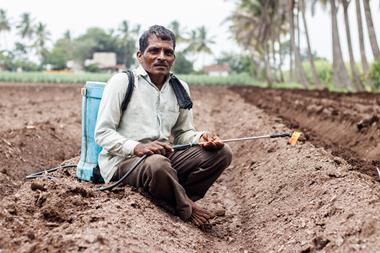Managing exposure risks poses questions about the extent of producers’ and regulators’ responsibilities for safety
Farmers and researchers across the world are experiencing disturbed sleep patterns associated with exposure to a variety of chemical pesticides. As Sanket Jain describes for Chemistry World, there is growing recognition of the problem in India, but research in the US, Spain and elsewhere has backed up farmers’ empirical observations – identifying and quantifying how pesticides are interfering with sleep-related physiological pathways.
Agrochemicals – by their nature – are highly bio-active, and many are acutely toxic. Despite the physiological differences between humans and insects, fungi and invasive weeds, molecules developed to combat those pests are likely to also exert some kind of effect on human systems. And the complexity of human biology means those effects are generally difficult to predict – particularly if associated with low-level exposure over prolonged timespans. The ongoing debate over the effects of glyphosate herbicides is a classic example.

Yet the solution is not as simple as just putting the pesticides down, as the farmers affected by this issue explain. They are just too useful as crop protection tools, and alternative methods come with their own costs and sacrifices, not least in terms of crop yields.
Part of the problem appears to be related to accessibility of measures to mitigate exposure risks, as well as education around safe chemical use. This highlights some of the challenges of managing hazardous chemicals in the real world. When agrochemicals are reviewed by regulators, there will be some assumptions (or specifications) developed around measures to manage and mitigate risks from various forms of exposure – both to operators applying the chemicals, and more broadly in the surrounding environment.
But even in the most tightly regulated jurisdictions, there is relatively little oversight to ensure that those actually using the products are following those specifications and adequately protecting themselves. While professional operators and distributors may be required to attend regular education and training on safe chemical handling and use in some countries, such provisions are far from universal.
So users face choices around the risks they’re exposing themselves to. And for that to be an informed choice, they must be fully aware of the nature of the hazards and how they could be mitigated. Users also need reasonable access to the necessary mitigation measures (including appropriate protective equipment as a last line of defence).
Again, in practice that ideal scenario can be very different from reality. And users may still decide the benefits outweigh the risks anyway. How far does personal responsibility extend in these circumstances, and at what point should manufacturers and regulators become accountable for the public health consequences?

















No comments yet